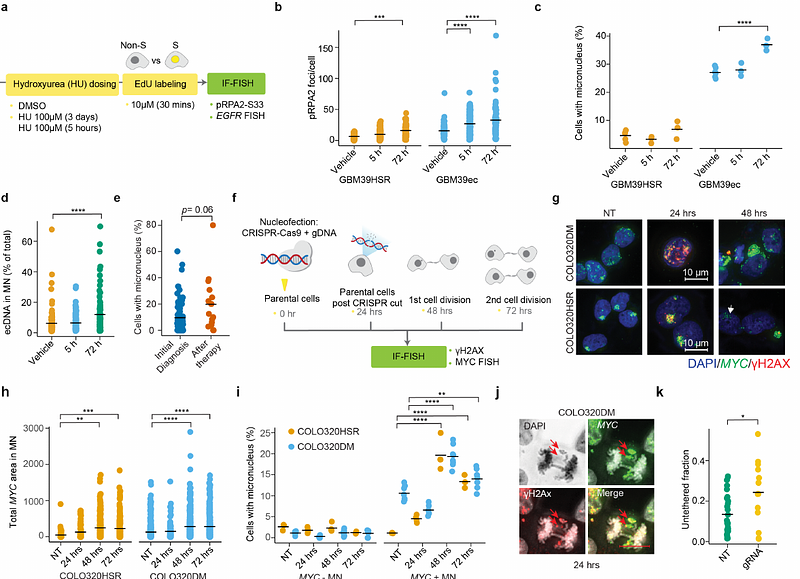Oncogene Silencing via ecDNA Micronucleation

Oncogene Silencing via ecDNA Micronucleation
Brueckner, L.; Xu, R.; Tang, J.; Herrmann, A.; Wong, I. T.-L.; Zhang, S.; Tu, F.; Pilon, M.; Kukalev, A.; Pardon, K.; Sidorova, O.; Atta, J.; Yu, Q.; Pradella, D.; Ilic, M.; Novais-Cruz, M.; Kaltenbach, S.; Treue, D.; Giurgiu, M.; Herzog, S.; Hollinger, A.-S.; Fernandez, M.; Becker, F.; Louma, V.-R.; Schmargon, R.; Doerr, J.; Gamlin, D.; Lehmann, A.; Guergen, D.; Richter, M.; Dubois, F.; Simeoni, F.; Pennycook, B. R.; Hamilton, A.; Lindemann, R. K.; Fischer, M.; Bafna, V.; Wahl, G.; Koche, R. P.; Chang, H. Y.; Papathanasiou, S.; Medema, R.; Spanjaard, B.; Ventura, A.; Pombo, A.; Huang, W.; Wer
AbstractExtrachromosomal DNA (ecDNA) is a common source of oncogene amplification across many types of cancer. The non-Mendelian inheritance of ecDNA contributes to heterogeneous tumour genomes that rapidly evolve to resist treatment. Here, using single-cell and live-cell imaging, single-micronucleus sequencing, and computational modelling, we demonstrate that elevated levels of ecDNA predisposes cells to micronucleation. Damage on ecDNA, commonly arising from replication stress, detaches ecDNA from the chromosomes upon which they hitchhike during cell division, thereby causing micronucleus formation in daughter cells. Clusters of oncogene-containing, CIP2A-TOPBP1-associated ecDNA molecules form, and asymmetrically segregate into daughter cell micronuclei during cell division. ecDNA chromatin remains highly active during mitosis, but upon micronucleation, it undergoes suppressive chromatin remodeling, largely ceasing oncogene transcription. These studies provide insight into the fate of damaged ecDNA during cell division.